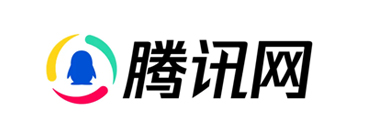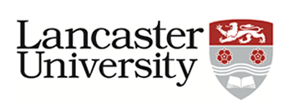留学干货|学会这些经典表达,拯救你的英文邮件!
非“发邮件”莫属!
尤其是在不同的文化背景下,某些中式英语表达出错误的情绪,容易让对方误解:明明想客气一下,结果对方以为你在命令 ta;明明想表示感谢,结果对方感觉你阴阳怪气......
初入职场,
掌握基础邮件礼仪可是头等大事!
如何写好英文邮件?
我们为大家整理了一些邮件技巧和句式案例,让你的邮件既正式又亲切,既地道又体面:
01 先写邮件主题
邮件主题通常能决定收件人是否打开邮件以及如何回复,没有主题的邮件是致命错误。
怎样才算一个好主题?很简单:Keep it short。标准的收件箱显示的电子邮件主题大概是60个字符,而手机最多只显示30个字符。因此标题最好简短,如用6-8个字直击重点。
同时,最好在开始写正文之前写好主题,因为这样就为你的内容定了基调,而且你也不会忘记加上主题。
02 打招呼随意一点
相信大家在以前学校的时候,都是以 Dear XX 或者 Mr XX / Mrs XX 开始一封邮件,但现实是在职场中,这样太过于重视的表达可能让人感到不自在,瞬间仿佛和你有了代沟。
所以除了你很尊敬的长辈,一句很随意的“Hi XX, ”就可以解决所有问题。
-
如果给两个收件人同时发邮件时,可以用:Hi XX and XXX,
-
而给很多人或者团队发邮件时,就不用把每个人的名字写上了:Greetings from XX, / Hi Team,
03 多问候!多感谢!做礼貌的好孩子
一般情况下,英文邮件可以简单分为四个部分:开头问候+正文+结尾问候+落款——可见问候有多重要。
邮件开头的问候
在和同事或者客户写邮件时,无论是你主动发送的邮件,还是回复别人的邮件,都一定、一定、一定要在邮件开头写一些寒暄或者感谢的语句,表示自己对对方的尊重。
1. 百搭问候
一般情况下,我们可以根据时间来决定问候的内容,比如在周一周二的时候,对方一定刚过完周末或者小长假,你可以这样说:
-
Hope you had a nice weekend.
-
I hope you had a great holiday.
-
I hope you enjoyed your weekend.
等到周五,可以做一个总结性祝福:
-
Wish you a great weekend!
或者更简洁的方式:
-
Happy Monday! / Happy Friday!
刚过完周末,一句Happy Monday会让对方感觉你元气满满又热爱工作,而且可能会被你的快乐所感染更加喜欢你哦!一句Happy Friday能让大家找到共鸣,毕竟有谁不喜欢将带来周末的周五呢~
2. 没有特殊情况的问候
实在不知道说什么
那么问题来了,周三周四说什么呢?别慌,邮件问候的方式有很多种,如:
-
Hope you’re having a good week.
或者别管是周几了,简单的问候:
-
Good morning / Good afternoon / Good evening,
又或者为了表达自己对对方的关注,可进行询问式问候:
-
How are things going over there?
-
How are things in [somewhere]?
3. 对不同收件人的问候
对于有段时间没见的熟人:
-
I hope you are well.
-
I hope you’re doing well.
-
Hope everything is going well with you.
对于前几天才见过的陌生人:
-
I'm glad we had a chance to chat at the convention.
-
It was a (great) pleasure to meet you yesterday.
-
I’m so glad that we had the chance to meet at the conference.
-
I’m glad that we were finally connected during [meeting/event].
对于不太熟的熟人或者普通客户:
-
I hope this email finds you well.
-
Hope all is well with you.
对于之前好久没见,但前几天又才见过的熟人:
-
It was great to see you on Thursday.
-
It was nice chatting with you at Monday‘s event.
如果你只是回复对方的邮件:
-
Thank you for your email about...
-
Thanks for your email this morning/yesterday / on Wednesday/last month...
-
Thanks for your feedback on/your invitation / your suggestion.
-
Thanks for sending / asking about/attending.
-
Thank you for reaching out (to me).
如果是回复对方的回复:
-
Thanks for your quick reply.
-
Thanks for getting back to me (so quickly).
-
Thank you for sharing / letting me know.
-
Thank you for the heads up / the notice.
-
Thanks for keeping me in the loop.
4. 带有歉意的问候
邮件不要求秒回,但最好也要第一时间回复。如果你的回复比预期晚了,最好表示一下自己的歉意:
-
Sorry for my late reply.
-
Sorry it took me so long to get back to you.
-
Sorry I haven’t got back to you sooner.
-
Sorry for the delay getting back to you.
-
I apologize for the late response.
-
Sorry it’s been so long since my last email.
在最后一刻做出会议改变或者通知的时候,要为自己的“临时”表达歉意:
-
I am sorry for the last minute notice.
如果要麻烦别人,也可以先表示歉意:
-
Please accept our apologies for any inconvenience caused.
邮件结尾的问候
1. 百搭问候
和开头问候的思路相似,我们可以根据时间划分。 比如周末前或者假期前,可以说:
-
Have a great weekend!
-
Have a nice holiday!
工作日的任何一天,都可以说:
-
Have a wonderful day!
-
Enjoy the rest of your day!
2. 简单感谢的问候
直接表示感谢:
-
Thank you for everything.
-
Cheers.
为别人的帮助表达感谢:
-
I would appreciate your help (in this matter).
保持联系:
-
Keep in touch.
3. 特殊问候
期盼他人的回复或其他:
-
Looking forward to hearing from you soon.
-
I look forward to hearing from you soon.
-
I look forward to seeing/meeting you.
-
Please let me know if this works / if you are available / if that sounds good / if you can / if you can help/ if you need to reschedule...
-
Any feedback you can give me on this would be greatly/highly/much appreciated.
你们将要见面时:
-
See you on Thursday / next week.
-
See you soon.
希望今后能为对方提供更多帮助时(很常用):
-
If we can be of any further assistance / If you need more information/more info/further information, please let us know.
-
Let me know if you need any help.
-
In the meantime, if you need any more information... If you have any (more) questions (about)...
-
please do not hesitate to contact me.
-
please feel free to contact me/to get in touch.
-
please let me know.
-
drop me an email / drop me a line.
4. 带有歉意的问候
为自己耽误了对方表示歉意或者帮不上忙时:
-
Thanks (again) you for your understanding / for your patience.
-
Once again, please accept our apologies for any/the inconvenience caused/for the delay/for the misunderstanding.
-
I really hope we can find a solution soon.
-
Sorry I couldn't be of more help.
04 正文要“放低姿态”
作为邮件的核心,正文的描述要直接,但表述方式不能太直接。
“放低姿态”不是要你处处高抬对方,而是要时时提醒自己注意礼貌用语。
比如在对对方提出请求时:
千万不要再用“I want” / “I need you to”(这个口语中常见的问题,延用到邮件里更加面目可憎,毕竟在邮件里对方不见你的表情和肢体语言),而最好改成 “I would like”:
-
As we discussed, I would like to send you...
-
I would like to share with you...
-
Please allow me to make a proposal.
还有”Can you [do something]”, 和容易引起歧义的 “Could you please”--其中的 “please ”时常用在反讽表达中,就像微信里的微笑脸变了味,所以最好的表达是:
-
I'd really appreciate it if you could...
-
I'd be very grateful / very helpful if you could...
-
I was wondering if you could / if you would be able to...
-
If possible, I'd like to know (more) about...
-
If you could have it ready by tomorrow/ the end of next week, I would really appreciate it.
-
Could you let me know if / when/ how / ...
-
Could you reply to me by today?
在简单的问候之后,可以直接进入主题,也可以先表明自己写邮件的来意:
-
I am writing to you about our last meeting / your presentation yesterday / our next event.
-
I am writing you to follow up on...
-
I am reaching out because...
-
This is just a quick note to... / This is just a quick reminder...
-
Might I take a moment of your time to...
-
This email is just to let you know that...
-
With reference to our telephone conversation today...
-
Just a quick heads up...
当你发邮件给一个“大忙人”或者上司,想表达自己不想占用对方过多时间时:
-
I understand you must be extremely busy with your new project, so I will just be brief.
-
I know you’re swamped, so I made sure that this wouldn’t take too much of yourtime.
-
I guess things must have been hectic on your end with the upcoming event, so I will just cut to the chase.
当你想拒绝对方,或者传达一个坏消息时,不要用“I don’t want to”或者直接说“No”, 改用“I'm afraid that”,是不是听起来就委婉了许多:
-
Unfortunately, we cannot/we are unable to...
-
I'm afraid it will not be possible to...
-
I'm afraid that we can't...
-
We regret to inform you that...
-
I regret to inform you that (due to...) ...
-
After careful consideration we have decided (not) to ... Due to [reason], it won't be possible to...
-
I'm sorry but it's out of my hands. I'm afraid I won't be able to...
想要获得别人的意见或者许可时,不要用“tell me”,改为“let me know”听上去更自然:
-
Please let me know if this is OK with you.
-
What are your thoughts (on this)?
-
Please let me know what you think / your feedback.
-
We just need the thumbs up/the green light
-
We're waiting for approval)
如果你添加了附件,就要对此做出解释:
-
I’ve attached... / I'm enclosing [file] / I've attached [file] Please find [file] attached.
-
I’ve attached [file] for your review.
-
The attached file contains...
对特别说明做进一步做解释:
-
Please see the information below for more details about...
-
The parts in bold / in red / are my comments / are the changes we made. Here's the document that you asked for.
-
As we discussed, [file] is attached.
-
Please find my two main questions below
-
Here are the details on...
想要向对方寻求更详尽的解释:
-
I didn't/don't fully understand [something]. Could you please explain that again?
-
I didn't quite get your point about [something]. Could you be more specific? Could you give us some more details on...?
-
If you could please shed some light on this topic, I would really appreciate it.
-
Could you please clarify [something] / when you would like us to finish this?
-
Could you please clarify what you would like us to do about...?
-
If I understood you correctly...
-
In other words, would you like us to...
发出会议/见面的邀请时:
-
I'd like to schedule a meeting on [day] if you are available/free then.
-
I am available on [day], if that's convenient for you.
-
Would you be available on [day]? If so, I'll send you an invite shortly.
-
Can you make it on [day]? If so, I'll book accordingly.
-
I'm afraid I can't make it on [day]. How about...?
-
(Due to...) I'm afraid we need to reschedule / delay / postpone / put back / cancel / call off / move / rearrange our meeting.
-
We are sorry to inform you that the interview/meeting scheduled for [day] will have to be rescheduled.
想表达自己会跟进项目或者会快速回复对方时:
-
I will get back to you (as soon as I can / possible)
-
I will get back to you on / by Friday.
-
I will keep you posted.
对自己的表达有一丢丢不够自信,但希望对方理解,或者纯粹表示友好时:
-
I hope you find this helpful.
-
I hope it's clearer now.
-
I hope that answers all your questions.
-
I know that's a lot to take in, so let me know if anything I've said doesn't make sense.
05 落款要“保持距离”
在职场,想结束一封邮件也要注意,不要显得和对方太熟,像“love you” “with love”、“your friend”之类的结语请放进你的回收站并清空!
永远不会出错的是:Kind Regards
你想换种说法时:Best Regards / Warm Regards
发给同事或者熟人时:Cheers
更传统一点,发给不太熟或者刚见面的人时:Yours Sincerely / Sincerely
06 容易忽视的细节,尽量别犯错
-
在职场中能表达尊重对方的最好方式就是尊重对方的时间,所以发邮件的各个细节都要表达出自己在帮Ta节省时间的诚意。
-
在自己更加熟悉英语语境前,在自己还没和同事混熟前,不要嫌麻烦,注重邮件礼仪,礼貌一点、委婉一点会让你在职场更受欢迎。
-
不要把社媒的“坏习惯”带到邮箱沟通中:
尽快回复:如果收到邮件有问题不能当天回复,也尽量要让对方知道自己收到了邮件,会尽快回复。
尽量少用缩写:除了和比较熟的同事,除了用 thx / ASAP /FYI等此类常见的缩写。
减少口语化表达。如 wanna / gonna这类邮件自动纠正系统都不收入的口语表达,一定要用原形表达。
-
当你们针对一封邮件相互回复太多次邮件时,可能邮件的标题已经变成RE: RE: RE: RE: XXXXX……这时就可以根据最新的话题修改邮件主题。
-
可以适当使用粗体、编号、记号笔、分段缩进等功能,让邮件重点更突出,逻辑更明确,让收件方打开邮件就能看清楚你要讲的重点。
-
正文内容太长,有太多事情要解释时,可以直接做成附件,并在正文中为附件写一段简短总结。
-
邮件附件要使用简洁明了的命名,而且在有多个邮件的时候最好在正文中做一个简单说明。
-
最后,就是在发送邮件之前一定要检查,最好连标点符号都不要放过。













